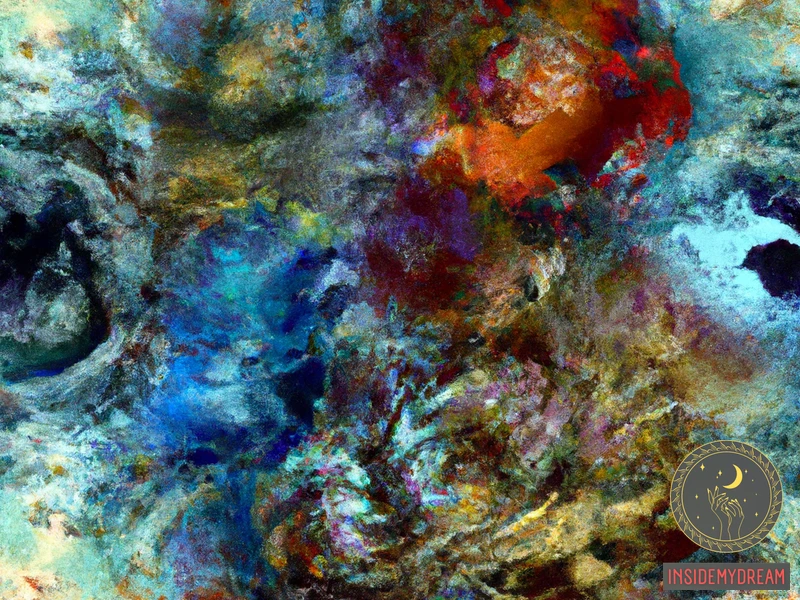Dreams have fascinated and puzzled humans for centuries. They have been interpreted as messages from the divine, the subconscious mind’s way of processing emotions, or even as random firings of neurons during sleep. Among the various types of dreams, those involving pain are particularly intriguing. What could these dreams mean, and how should we interpret them? In this article, we will explore the possible meanings behind pain dreams and how they might be related to our waking lives.
The Nature of Dreams

Before delving into the specific topic of pain dreams, it is important to understand the nature of dreams themselves. Dreams are a complex and often mysterious aspect of human experience. They occur during the rapid eye movement (REM) stage of sleep and can involve a wide range of sensory experiences, emotions, and scenarios. While some dreams may seem nonsensical or bizarre, others can elicit strong emotions and leave a lasting impact on the dreamer. It is within this context of the enigmatic world of dreams that we will explore the significance of pain dreams.
Understanding Pain Dreams

Pain dreams, as the name suggests, involve the experience of physical or emotional pain within the dream narrative. These dreams can manifest in various forms, such as being injured, feeling intense discomfort, or witnessing the suffering of others. The pain experienced in these dreams can range from mild discomfort to excruciating agony, and the dreamer may wake up with a lingering sense of unease or distress.
Physical Pain in Dreams
One common type of pain dream involves experiencing physical pain within the dream state. This can take the form of being injured in an accident, feeling the sensation of burning or stabbing, or enduring any other type of physical trauma. These dreams can be particularly vivid, with the dreamer experiencing the sensations as if they were real. Upon waking, the residual effects of these dreams can leave the dreamer feeling shaken and vulnerable.
Emotional Pain in Dreams
In addition to physical pain, dreams can also encompass emotional pain and distress. These dreams may involve feelings of grief, heartbreak, betrayal, or overwhelming sadness. The emotional turmoil experienced in these dreams can be just as intense as physical pain, if not more so. The dreamer may wake up with a heavy heart and a lingering sense of emotional discomfort.
Symbolism in Pain Dreams
Beyond the literal interpretation of pain dreams, it is important to consider the symbolic significance of the pain experienced within the dream narrative. Pain can serve as a metaphor for various aspects of the dreamer’s waking life, including unresolved emotional issues, internal conflicts, or external stressors. By examining the symbolism within pain dreams, we can gain valuable insights into the dreamer’s subconscious thoughts and feelings.
Theories and Interpretations
Numerous theories and interpretations exist regarding the meaning of pain dreams. Some psychologists and dream analysts believe that pain dreams may reflect the dreamer’s subconscious fears, anxieties, or repressed emotions. Others interpret pain dreams as a way for the mind to process physical sensations experienced during sleep, such as aches or discomfort. Additionally, cultural and individual differences can influence the interpretation of pain dreams, making them a deeply personal and subjective experience.
Psychological Perspective
From a psychological standpoint, pain dreams can be viewed as a manifestation of the dreamer’s inner turmoil. The pain experienced in these dreams may symbolize unresolved psychological conflicts or emotional wounds that the dreamer has yet to address. By exploring the underlying emotions and themes present in pain dreams, individuals may gain a deeper understanding of their own psyche and the areas of their life that require attention and healing.
Cultural and Symbolic Interpretations
In various cultures and belief systems, pain dreams are often interpreted through a symbolic lens. For example, in some traditions, experiencing pain in a dream may be seen as a warning or a message from the spiritual realm. The specific type of pain experienced in the dream, as well as the context in which it occurs, can hold significant cultural and symbolic meanings that provide valuable insights into the dreamer’s spiritual or emotional state.
Physical and Biological Factors
Biological factors can also play a role in shaping the experience of pain dreams. Physical discomfort or bodily sensations during sleep, such as muscle aches or illness, can manifest as pain in dreams. Additionally, individuals who suffer from chronic pain conditions or physical ailments may be more likely to experience pain-related dreams, highlighting the intricate connection between the body and the mind during the dream state.
Interpreting Pain Dreams
Interpreting pain dreams is a deeply personal and introspective process. While external sources such as dream dictionaries or expert opinions can provide guidance, the most meaningful interpretations often arise from the individual’s own reflections and introspection. Here are some considerations to keep in mind when interpreting pain dreams:
Exploring Emotional Triggers
Reflect on the emotions and thoughts evoked by the pain dream. Are there any recurring themes or unresolved emotions that the dream may be highlighting? Exploring the emotional triggers within the dream can offer valuable insights into the dreamer’s inner landscape and areas of emotional significance.
Connecting to Waking Life
Consider how the pain experienced in the dream may relate to the dreamer’s waking life. Are there parallel situations or emotional experiences in the waking world that mirror the pain dream? Making connections between the dream narrative and real-life circumstances can shed light on the underlying meanings and messages embedded within the dream.
Seeking Support and Guidance
If pain dreams evoke intense emotions or raise concerns, seeking support from trusted individuals or mental health professionals can be beneficial. Discussing the dreams with others and exploring their potential significance in a safe and supportive environment can provide clarity and emotional validation.
Journaling and Self-Reflection
Engaging in journaling and self-reflection can aid in processing and interpreting pain dreams. Recording the details of the dream, exploring associated emotions, and reflecting on personal insights can foster a deeper understanding of the dream’s significance and its potential relevance to the dreamer’s life.
Coping with Pain Dreams
For individuals who experience distressing pain dreams, coping strategies can help alleviate the emotional impact and promote a sense of peace and well-being. Here are some approaches to coping with pain dreams:
Mindfulness and Relaxation Techniques
Practicing mindfulness and relaxation techniques, such as meditation, deep breathing, or progressive muscle relaxation, can help manage the emotional distress associated with pain dreams. These techniques promote a sense of calm and centeredness, allowing the dreamer to navigate the aftermath of the dreams with greater ease.
Engaging in Creative Expression
Expressing the emotions and themes embedded within pain dreams through creative outlets, such as art, writing, or music, can provide a cathartic release and a means of processing the dream’s impact. Engaging in creative expression allows the dreamer to externalize their inner experiences and gain a sense of empowerment over the emotional content of the dreams.
Seeking Therapeutic Support
For individuals who experience recurring or distressing pain dreams, seeking therapeutic support from mental health professionals can offer valuable guidance and coping strategies. Therapists and counselors can assist in exploring the underlying emotions and themes within pain dreams and provide support in managing their emotional impact.
Creating a Comforting Sleep Environment
Establishing a comforting and soothing sleep environment can contribute to a sense of safety and security, potentially reducing the occurrence of distressing dreams. Practices such as maintaining a consistent sleep schedule, creating a calming bedtime routine, and ensuring a comfortable sleep environment can promote restful and peaceful sleep experiences.
The Transformative Potential of Pain Dreams
While pain dreams can evoke distress and discomfort, they also hold the potential for transformation and personal growth. By engaging with the emotional content and symbolism of pain dreams, individuals can embark on a journey of self-discovery and healing. The insights gained from pain dreams can serve as catalysts for introspection, emotional processing, and the resolution of inner conflicts.
Embracing Emotional Awareness
Pain dreams can serve as reminders of the importance of emotional awareness and self-exploration. By acknowledging and addressing the emotions and themes present in these dreams, individuals can cultivate a deeper understanding of their inner world and develop greater emotional resilience and insight.
Healing and Integration
Exploring the underlying meanings and messages within pain dreams can facilitate the process of healing and emotional integration. By engaging with the symbolic and psychological implications of the dreams, individuals can work towards resolving inner turmoil and fostering a greater sense of emotional balance and well-being.
Empowerment and Self-Reflection
By interpreting and engaging with pain dreams, individuals can reclaim a sense of empowerment and agency over their emotional experiences. The act of self-reflection and introspection in response to pain dreams can provide a pathway towards personal growth, self-discovery, and the cultivation of emotional resilience.
If you’re curious about the meanings behind dreams involving pain, you might also find our articles on playing dream meanings and patient dream meanings intriguing. Additionally, our piece on packing dream meanings could offer further insight into the complex world of dream interpretation.
Conclusion
In the realm of dreams, pain serves as a potent and multifaceted symbol, offering insights into the complexities of the human psyche and the interplay between the conscious and subconscious mind. Pain dreams, whether manifested as physical or emotional discomfort, invite us to delve into the depths of our inner experiences and confront the unresolved aspects of our emotional landscape. By exploring and interpreting pain dreams with mindfulness and introspection, individuals can harness the transformative potential of these dreams, paving the way for emotional healing, self-discovery, and personal growth.









